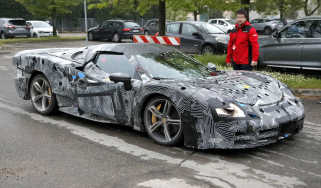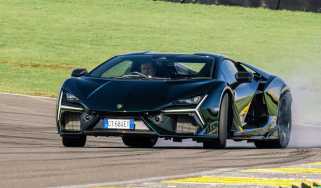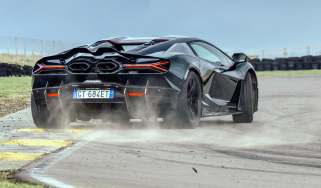The original McLaren F1 press release in full - Every detail of the incredible V12 supercar - McLaren F1 wheels and tyres
As McLaren re-publishes the full, original 1992 press release for its F1 supercar, it's a perfect time to celebrate the F1, we think
RIGHT FROM THE McLAREN F1’S INITIAL DESIGN,THE TYRE WAS CONSIDERED AS AN INTRINSIC SUSPENSION ELEMENT
Potential speeds above 200mph, over 550bhp, high cornering loads and high downforce demand no ordinary tyres. McLaren and Goodyear first raced together in 1968 and now cooperate on the McLaren F1 programme.
The dedicated Goodyear ‘F1’ P235/45ZR17 front, and P315/45ZR17 rear, tyres have been created using the latest race-proved techniques – computer modelling, CAD/CAM generated mould cavities, high-speed constructions, and exotic lightweight materials.
Right from the McLaren F1’s initial design, the tyre was considered as an intrinsic suspension element within the programme’s complex handling and comfort calculations. Weight, safety, noise and dynamic performance were all vital factors.
Chosen tread pattern is asymmetric and directional, sharing many of Goodyear’s patented ‘Quattro Stazione’ pattern features from their latest racing rain tyre. Tyre sizes have been carefully selected to optimise traction and braking, while fostering the finely balanced handling which McLaren Cars demands. A current trend towards ever-larger wheel diameters has been resisted, 17-inch being judged best for weight, package and contact patch geometry.
Since the tyres are different-sized front and rear and directional, no two on the F1 are the same. Consequently, the F1 carries no spare, the weight of a component which is most unlikely to fail in normal use being deemed unacceptable. However, in case of emergency a puncture sealant aerosol is carried.
Because the ‘F1’ tyre is uniquely tailored for this exclusive design, it will be manufactured using Formula 1 techniques in Goodyear’s race tyre plant at Akron, Ohio, USA.
The McLaren F1 rides on purpose-designed OZ Racing wheels, painstakingly developed to match the car’s character. They are cast like Formula 1 racing wheels in aerospace-grade magnesium alloy, and feature sophisticated anti-corrosion measures to ensure sustained performance and appearance throughout the McLaren F1’s long predicted service life.






